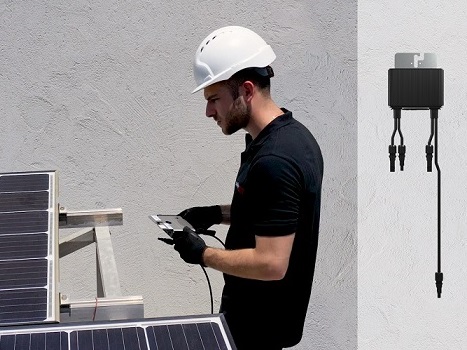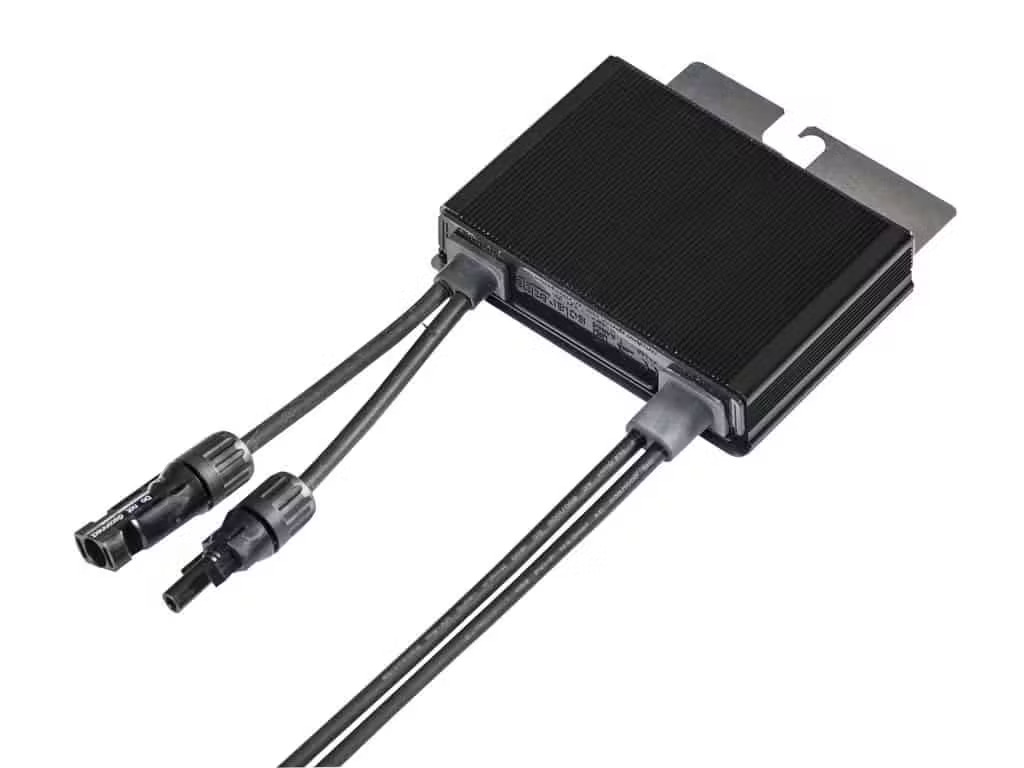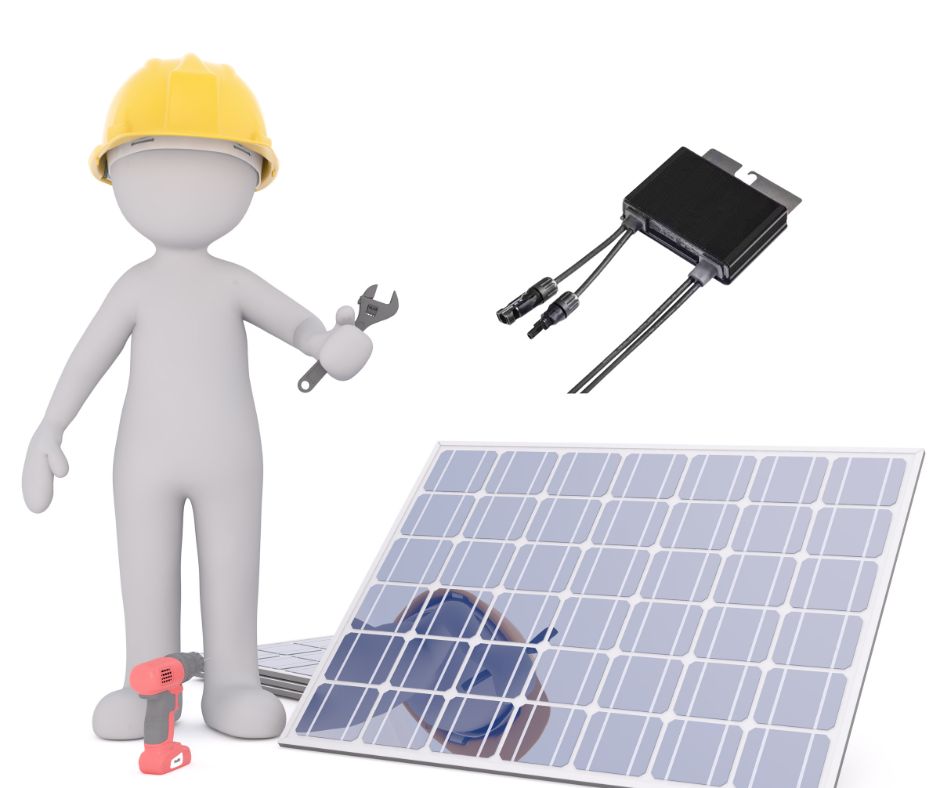As the world continues to shift towards renewable energy, solar panels have become famous for individuals and businesses looking to reduce their carbon footprint and save money on energy costs in Vancouver.
However, not all solar panels are created equal, and to achieve maximum energy output, it is essential to consider using solar power optimizers.
What is a Solar Power Optimizer?

A solar power optimizer is a device connected to a central inverter, which converts the solar module’s direct current (DC) power into alternating current (AC) power that can be used to power appliances and devices.
Power optimizers work by performing maximum power point tracking (MPPT). This process constantly tracks and adjusts the output voltage of each panel to ensure that it is operating at its maximum power threshold.
Solar power optimizers are installed on each solar module, allowing for module-level power electronics (MLPE) that can operate independently of other panels in the array.
Why Use Solar Optimizers in BC?
Solar optimizers are a valuable tool in enhancing the performance of solar PV systems.
In British Columbia, Canada, solar edge optimizers are particularly useful due to the province’s unique climatic and geographic conditions.
Challenges in BC
British Columbia has diverse weather patterns that can impact solar panel performance.
The province experiences a wide range of temperatures, ranging from -20°C in the winter to +30°C in the summer.
Solar panels can be impacted by these temperature fluctuations, which can affect the performance and output of the panels.
In addition, BC experiences frequent cloud cover and rain, which can further reduce the output of solar panels. The unique geography of BC can also impact solar panel performance.
Shading
Trees and other structures can cast shadows on solar panels, significantly reducing their output.
This is particularly true in areas with heavy tree coverage or where buildings cast shadows on the panels.
Solar optimizers help mitigate this issue by allowing each panel to operate independently and optimize its output, even when shaded.
Module Mismatch
Different solar panels within the same array can have slightly different specifications, leading to performance issues.
This can be particularly problematic in large-scale installations where companies often manufacture panels.
Optimizers help ensure that each panel operates at its maximum efficiency, even if it is not perfectly matched with its neighbours.
Orientation
The orientation of solar panels is also a critical factor in maximizing performance. In BC, solar panels are typically installed at an angle to maximize their exposure to the sun.
However, the angle of each panel may not be identical, which can lead to differences in performance. Optimizers help adjust the output of each meeting to ensure that the system is performing optimally.
Different Types of Solar Optimizers in BC

Discrete DC Optimizers
Discrete DC optimizers are the most commonly used type of solar panel optimizer in BC and are installed on the back of each solar panel. They work by monitoring the power output of each meeting and adjusting the DC voltage and current to ensure that it is operating at peak efficiency.
This optimizer can be used with a fixed string voltage or a SolarEdge power optimizer to maximize energy production.
One of the main advantages of discrete DC optimizers is that they offer individual panel monitoring. The optimizer will detect and adjust the output if one panel is underperforming.
This can help maximize the entire system’s power output, even in conditions where some panels may be partially shaded or affected by other environmental factors.
Smart Panels
Smart panels are a newer type of solar panel optimizer in BC that combines the solar module and the optimizer into a single device. This eliminates the need for separate optimizers installed on each panel and simplifies the installation process.
Smart panels offer several advantages, including improved performance in shaded or partially shaded conditions, simplified installation, and reduced risk of smart modules mismatch.
Smart panels use a built-in optimizer to monitor and adjust the output of each meeting. This helps to ensure that each panel is operating at peak efficiency, even in conditions where some panels may be affected by shading or other environmental factors. Smart panels can be used with a fixed string voltage or a SolarEdge power optimizer to optimize energy production.
Maxim Panel
Maxim panels are another type of solar panel optimizer designed to be installed at the module level. They work by optimizing the output of each solar module and are known for their high efficiency and reliable performance.
Maxim panels offer individual panel monitoring. They can be used with a fixed string voltage or a SolarEdge power optimizer.
Maxim panels’ main advantages are that they offer superior performance in extreme environmental conditions, such as extreme temperatures or humidity. They also provide a high degree of manufacturing tolerance, which helps to reduce the risk of intelligent module mismatch and other performance issues. Maxim panels can be used in various PV systems, from small residential to large commercial installations.
Microinverters
Microinverters are a type of solar panel optimizer installed on each solar panel. They work by converting the DC power generated by the panel into AC power, eliminating the need for a central inverter.
Microinverters offer several advantages, including improved performance in shaded conditions, individual panel monitoring, and reduced risk of module mismatch.
One of the main disadvantages of microinverters is that they are generally more expensive than other optimizers. They also require more complex installation and maintenance than different optimizers, which can increase the overall cost of the solar system.
However, microinverters may be the best choice for some PV systems to maximize energy production and system performance.
In conclusion, several different types of solar optimizers are available, and the best choice will depend on the specific needs and goals of the solar system. Solar installers can help design optimal PV systems and choose the best optimizer to maximize the power output and system performance.
Advantages of Solar Power Optimizer in BC

There are several advantages to using solar edge power optimizers in a solar system in BC.
First and foremost, power optimizers can increase the energy output of a solar system by up to 25%, leading to significant cost savings over time.
Additionally, by allowing for module-level monitoring, solar installers can identify and address issues with individual panels, ensuring that the entire array is operating at maximum efficiency.
Another advantage of solar power optimizers is their flexibility in designing optimal PV systems.
By allowing for longer strings of solar panels, solar power optimizers reduce the need for multiple solaredge inverters. This results in lower installation costs and better system performance.
Disadvantages of Solar Power Optimizer

While there are several advantages to using solar power optimizers, there are also some disadvantages.
For example, power optimizers can be expensive, adding to the overall cost of installing solar panels. Additionally, power optimizers can improve energy production in shaded panels or panels affected by partial shading. However, they may not be necessary for areas with little shade.
Power optimizers may not function effectively in extreme environmental conditions, such as high temperatures or low light conditions. This can lead to a reduction in energy production.
Some power optimizers may not be compatible with certain module types or are affected by manufacturing tolerances or mismatches. It is essential to note this when selecting power optimizers for your solar installation.
When to Choose Solar Optimizers in BC?

Choosing the right technology for your solar panel system in British Columbia can be daunting. String inverters and central inverters have been popular for many years. However, solar optimizers have become increasingly popular in recent times. But when should you choose solar optimizers over the other available options?
In the case of Complex Roof Design
If your solar panel system has a complex roof design or if there is shading on the roof, solar optimizers are the perfect solution. Power optimizers have an individual panel monitoring feature. This can help you identify and resolve any performance issues caused by shading or other factors.
In the Case of a Small Solar Panels System
Similarly, if you have a small system with only a few panels, solar optimizers may be your ideal choice. Since each panel will have its optimizer, it allows for maximum power output from each panel. This results in optimized energy production for your solar system.
Temperature Differences
Another scenario in which people prefer solar optimizers is when there are temperature differences across the solar panels. This can happen if some panels are exposed to direct sunlight while others are in the shade. Solar optimizers help mitigate these differences by constantly tracking the maximum power point of each panel, regardless of its temperature.
Bottom Line
In conclusion, power optimizers are essential for achieving peak performance in solar systems. This is especially true in British Columbia’s weather conditions. The power optimizer technology is designed to enhance the output of photovoltaic (PV) systems. It employs maximum power point tracking (MPPT) to reduce the losses caused by shading and other environmental factors.
Power optimizers also help in improving the overall efficiency of the system. This provides significant benefits in terms of energy production and return on investment. With the increasing demand for solar energy, power optimizers in PV systems are becoming more prevalent. By integrating power optimizers, it’s possible to achieve the maximum potential output of solar panels in BC’s climate. This makes them a critical component in any solar installation.


Leave a Reply